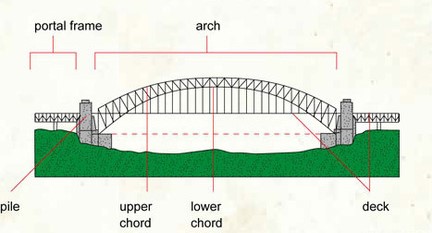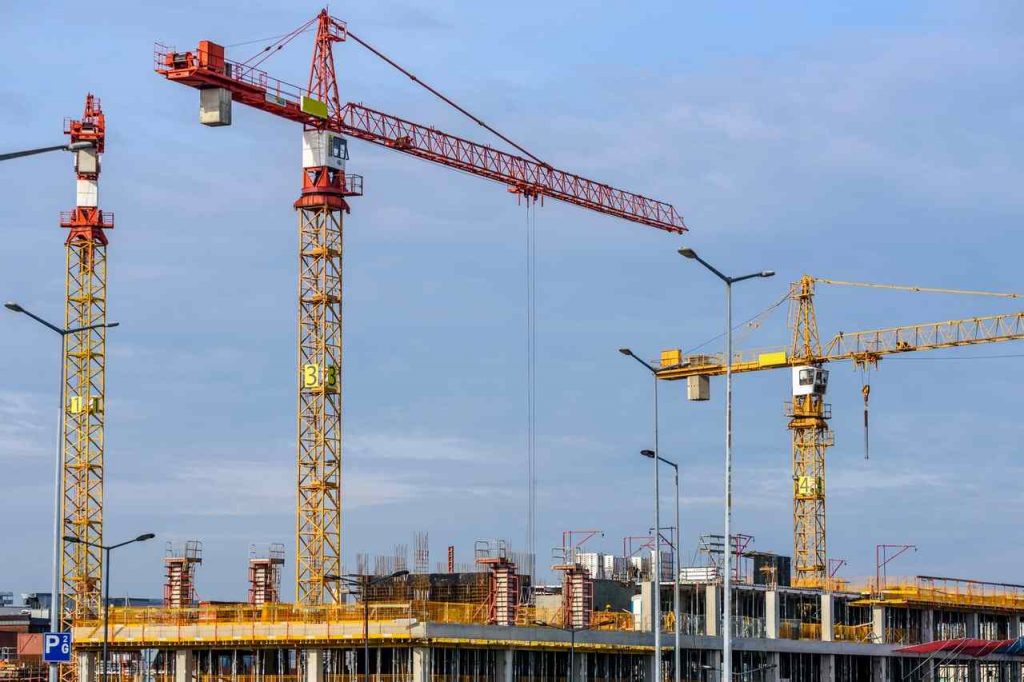Tied arch bridge (also called a bowstring-arch bridge or bowstring-girder bridge) is a type of bridge that consists of rib on both side of the deck, and one tie beam on both arches that support deck. Vertical ties connected to the arch support deck from above.
It can be considered a bridge between the arch bridge and a suspension bridge.

Structural Behavior of Tied Arch Bridge
The above fig shows the structural actions of the tied arch bridge while loads come to the deck.
Hangers and its arrangements
Tied arch bridges with a good choice and arrangements of hangers show a solution for appearance and structural stability. The maximum axial force and maximum force variation in the hangers, the maximum bending moment and moment variation in the arch and the tie are strongly influence the hanger arrangement.
Nowadays wide ranges of hangers are available. The simplest one commonly used the round bar, such as the Macalloy system. bars are available up to 100mm dia.
The most compact choice is to use either rope, spiral strand or locked coil strand. If one hanger breaks accidentally the adjacent hangers are capable to work under high-stress levels. So hangers should strong enough to carry extreme loads.
Different types of hanger arrangement are the followings:
- Vertical arrangement.
- Fan arrangement.
- Network arrangement with inclined hangers having multiple intersections.

In one hand Vertical and fan arrangement are better than network arrangement if fatigue is considered as the only parameter. But in other hand network arrangement is globally accepted if bending moment in arch and tie and the values of axial forces in hangers are considered.
Advantages of Tied arch bridges
- Variety of materials used for the construction of Tied Arch Bridges such as concrete, steel, stones, bricks etc. so it’s very resistant to failure.
- Extremely strong, because the arch design allows the forces to the deck goes to arches via hangers which means no part of the bridge takes on the high amount of pressure. The half-circle design prevents any changes in the bride due to bending.
- They are very resistant so that the force due to moving transports the loads pass to the arches and equally distributed to both ends and that makes the force pressing action less in the middle on the bridge. This had made the bridge stronger than other traditional bridges.
- They became stronger, this is because since the arch bridges are built to compress, they actually become stronger with more visit on them.
Disadvantages of Tied arch bridges
- Not economical, because it should be built in a particular way and variety of material needed for construction
- Regular maintenance required for better stability of the hangers and arch.
- The size of the bridge is limited
- The time required for the construction of a Tied arch bridge is a lot more compared to other conventional bridges.
- If one hanger breaks the entire structure goes to stability risk.
Tied Arch bridge in India
One of the famous tied-arch bridge in India is the Godavari Arch Bridge in Rajahmundry Andhra Pradesh. It is the three bridges that span the Godavari river at Rajahmundry which is built by Hindustan Construction company for Indian railways, designed by Bureau BBR Switzerland. The construction began in 1991 and lasted till 1997. It was commissioned for passenger traffic in March 1997 and became fully operational for running trains by the Indian railways from 2003.




Good information
Very informative article. In fact in most of the recent bridge construction that I know of, specially renovation, the administration and design team made their choices between either Bow string girder or suspension bridge, in addition to the structural stability, I think it also have a good architectural view.